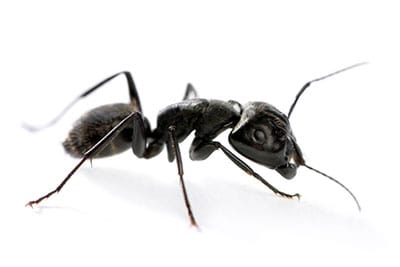Latin Name: Pheidole spp.

Big-headed ants get their name not from their behavior but the actual size of their head. They aid natural decomposition processes and clean up decayed organic matter. They’re less dangerous as long as they remain in their typical habitats. However, the moment they intrude on your home, they become a threat. Therefore, you must protect your family and home from them.
Big-headed ants have over 1000 species, and their botanical name is Pheidole spp. You can identify their workers by their enormous heads and tiny bodies. Depending on the species, big-headed ants are usually light reddish-brown, nearly black, and dull-colored. The colonies of big-headed ants consist of minor and major workers, differentiated by their sizes. Minor workers are about 2 mm in length and much more common than the major workers. These minor workers also have large mandibles that allow them to crush seeds.
The front half of the head is well sculptured, while the back is smooth and shiny. They have curved antennae divided into twelve segments with clubs at the end. They also have their bodies covered with long hair. At their waists, there is a pair of short spines that face upward. The queen ants are the only winged ones.
Some species of big-headed ants produce a pungent odor as a defense mechanism whenever they are frightened.
Big-headed ants are common in the subtropical areas, especially in Australia, Florida, and Hawaii in the U.S. They are primarily soil-nesting ants found beneath logs, stones, and landscape timbers. Usually, you can find them inside the soil of potted plants and inside cracks in the slab. You also find them in rotten or excavate old termite-damaged wood to make a nest.
Other places you will find them include bathrooms, attics, basements, and kitchens. In the bathrooms, they are mostly found around and under the sinks because moisture gathers there. You will find them on countertops in the kitchen, near door, window frames, under appliances, and where there are crumbs.
Big-headed ants are omnivores. Thus, they eat insects and other arthropods. They feed on sweets, grease, seeds, and high-protein food. They also feed on small invertebrates like honeydew from aphids, mealybugs, whiteflies, soft scale insects, and planthoppers. These insects can enter into cracks in walls and congregate in kitchens. They often leave trails of soil-covered debris that look like termite shelter tubes.
We can classify the big-headed ant as a pest because they are vigilant foragers. They also leave piles of sand and debris in the house and trails that lead to their colonies. These trails are sometimes in tree trunks, which may make the environment deteriorate. They may not cause structural damage to your home. Yet, they can make a mess on the interior, functionality, and aesthetics of your landscape. Aside from that, we are sure you do not like the idea of creepy crawlers in your space.
The big-headed ants do not sting or cause any significant damage. It can only be a threat when their nest is disturbed. Their bites are usually painless.
You will often find big-headed ants from trails or tubes around the sides of trees and the house’s exterior. These mounds are usually found in sand or soil patches in your home’s landscape in a conical shape. The colonies of big-headed ants are small, and only about 200 to 300 ants make up a sizable extended colony. Note: A colony has multiple queens and mating situations that only take place in summer.
Big-headed nests are soil nesters. Thus, it makes their colonies easily accessible with the soil formed while making tunnels in the ground. Most of their colonies are small and easy to treat. However, it can be challenging to treat infestations when it comes to numerous colonies at once.
However, here are some common tips for limiting infestations:
If you suspect these pests are in or around your home, give us a call for a Free Home Inspection!
